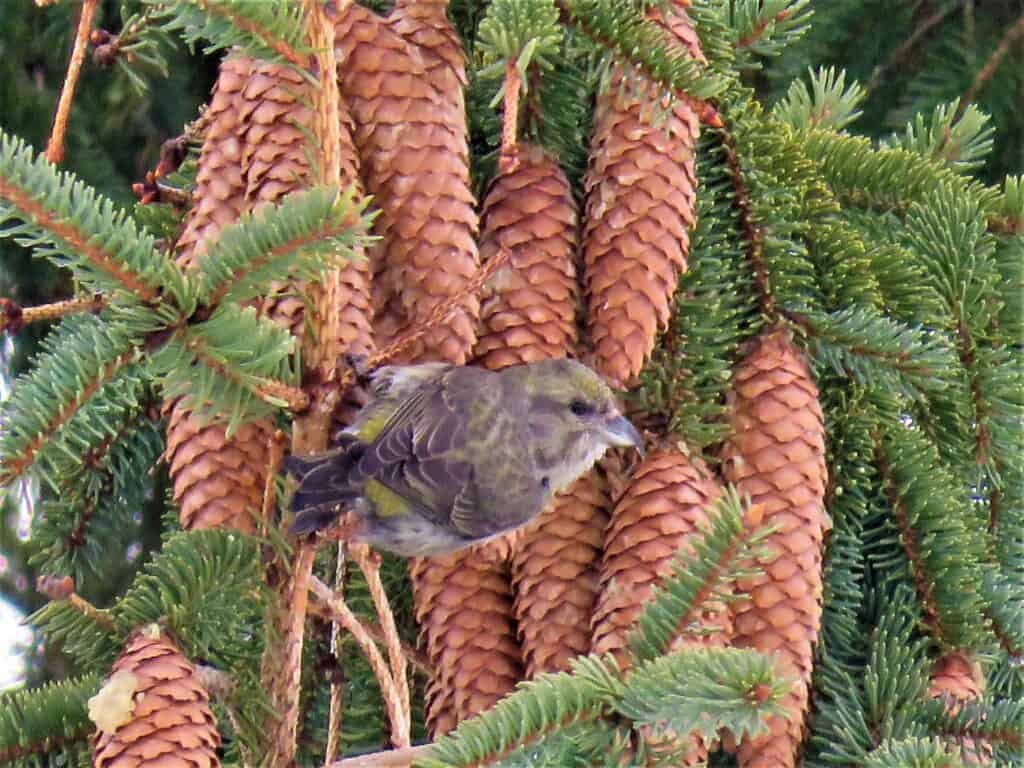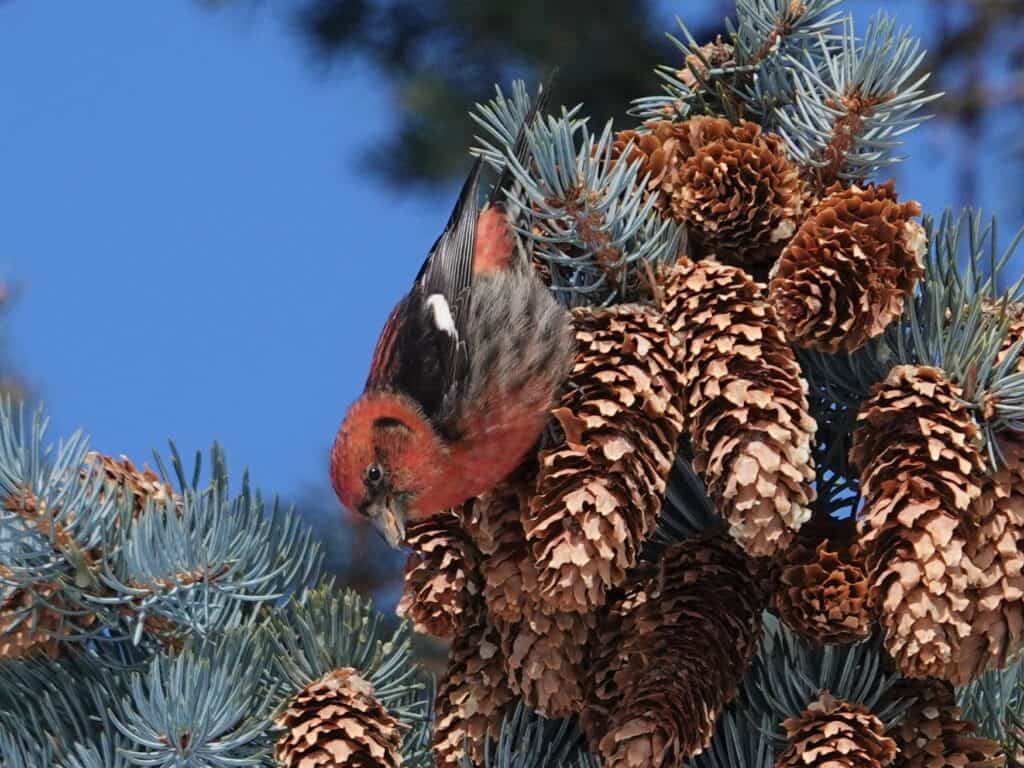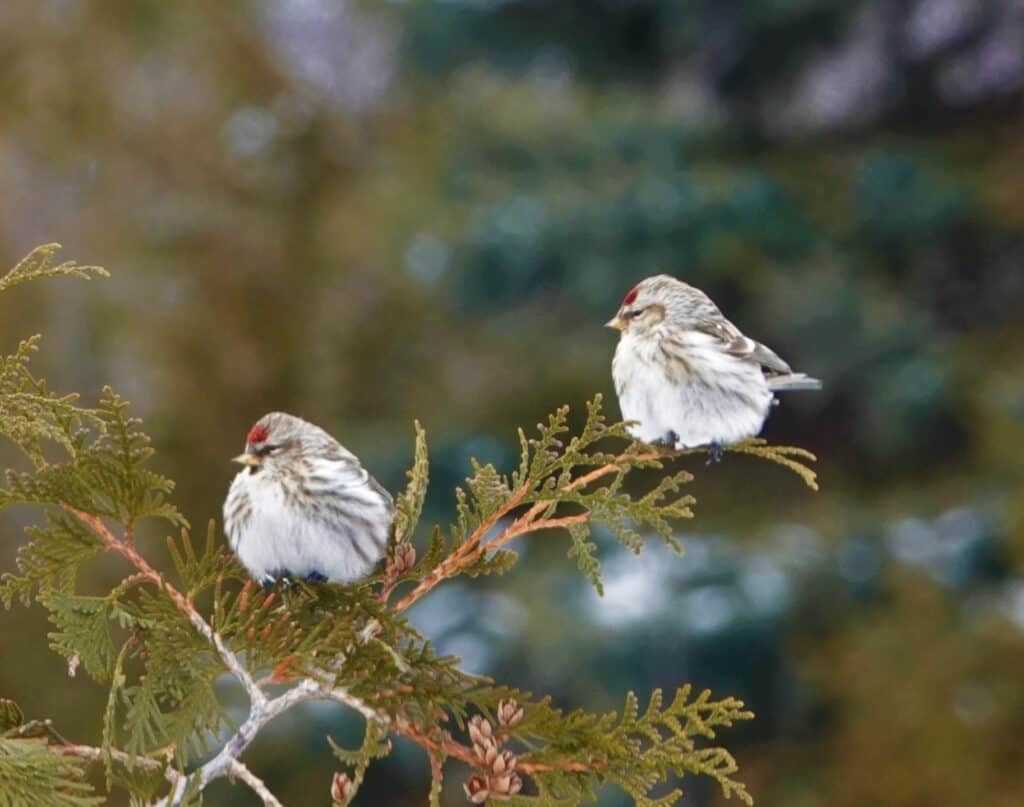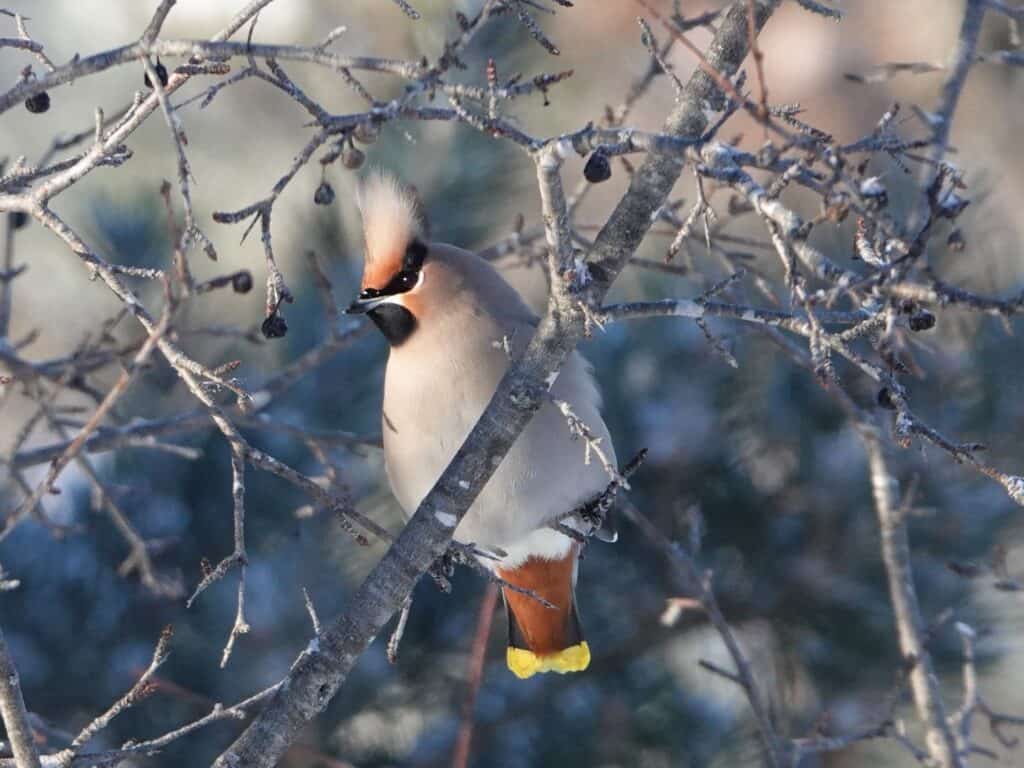Peterborough Examiner – November 12, 2021 – by Drew Monkman
A look at the annual winter finch forecast
Anyone who feeds or watches birds knows that the relative abundance and diversity of species varies widely from one winter to the next. These fluctuations are most noticeable in a group known as winter or northern finches. The term is used to describe highly nomadic species like redpolls, siskins, purple finches, crossbills, and grosbeaks. Some winters, they are abundant, while other years they don’t show up at all.
Northern finches move south – or sometimes east or west – in late fall when there is a shortage of seeds in their boreal forest breeding range. The key seeds affecting finch movements are those of birches, American mountain-ashes, and spruce. If seed crops are good in the boreal forest, the birds usually stay put. If food is lacking, they will sometimes fly thousands of kilometres to find it. Whether they actually end up in the Kawarthas depends on a poor food supply further north and a healthy seed crop here.
From 1999 to 2019, Ron Pittaway of the Ontario Field Ornithologists prepared an annual forecast of what species to expect in the coming fall and winter. Last year, Tyler Hoar of Oshawa took over forecasting duties. According to Hoar, this year’s flight probably won’t be an “irruption year” (an exceptionally large movement of northern birds southward). Still, some species like crossbills, pine siskins, and evening grosbeaks may turn up in reasonable numbers. And, with a bit of searching, birders should be able to find nearly all of the winter finch species. However, the numbers showing up at feeders is unlikely to compare to last year.
Hoar also notes that extreme weather this summer has severely impacted food sources for birds in a huge swath of western Canada. With over 2000 forest fires having burned from northwestern Ontario to British Columbia, record-setting high temperatures, and severe droughts in the Prairie provinces, climate change wreaked havoc on many ecosystems.
Individual forecasts
Making predictions is difficult because there are factors involved other than food, most of which are poorly understood. That being said, last year’s forecast proved to be quite accurate.
1.White-winged Crossbill: Thanks to the crossed tips of the upper and lower mandibles of their bill, crossbills specialize in removing seeds from beneath the scales of conifer cones. White-winged crossbills are attracted mostly to spruce, tamarack, and hemlock. Red crossbills dine on these same species but will also visit pines. Watch and listen for their loud trilling songs given from tree tops. Unfortunately, crossbills rarely show up at feeders.
Given the robust crop of cones on spruce and hemlock this year, we can expect to see white-winged crossbills in the Kawarthas. Many have already been observed. Hopefully, we’ll even see these birds feeding on the cones of ornamentals like Norway and blue spruce right here in Peterborough.
2. Red crossbill: Red crossbills should also make an appearance this year. However, none have showed up so far. This is one bird I’m really hoping to see, having missed it entirely during my Peterborough County “Big Year”. From March 25, 2020 to March 24, 2021, I scoured the county to see how many bird species I could find. I ended up with 223, but the red crossbill was not among them. What was most frustrating was missing one in Rotary Park by a matter of minutes. The Park’s stand of conifers just west of the London Street footbridge is always worth checking out for crossbills and many other birds.
3. Pine siskins: With the excellent spruce, hemlock and eastern white cedar crop across southeastern Canada, pine siskins should be present in the Kawarthas this winter. Some have already turned up at feeders. Siskins prefer nyger seeds.
4. Common and hoary redpolls: Redpolls, too, feed largely on tree seeds. Given that the crops on birches and alders are average to above-average in the north, most redpolls will remain there. As the winter progresses, however, some are likely to trickle southward. If redpolls do make it to the Kawarthas, watch for them in weedy fields and on birches. At feeders, they prefer nyger and black oil sunflower seeds. If a flock graces your backyard, watch for small numbers of hoary redpolls, too. They tend to be larger, paler, and smaller-billed than common redpolls.
5. Purple finch: These finches moved south earlier this fall and many visited local feeders. Most, however, have already continued their southward migration and only small numbers are likely to be around come winter. An easy way to tell purple finches from look-alike house finches is by checking the tip of the tail; the former has a distinctly notched or slightly forked tail, whereas the house finch’s tail is squared off. Both species prefer black oil sunflower seeds at feeders.
6. Pine grosbeak: Most pine grosbeaks will probably remain in the north, given a healthy mountain-ash berry crop. A few might drift south to Algonquin Park, but they are unlikely to turn up in the Kawarthas. Despite an identical prediction last year, large numbers of these birds did in fact move south. Some have already been sighted this fall.
7. Evening grosbeak: In the fall of 2020, we experienced the largest southward movement of evening grosbeaks in 25 years. This year, there is a good chance of an “echo flight.” At feeders evening grosbeaks prefer black oil sunflower seeds. I still remember the thrill of seeing the exquisite yellow, black, and white males at my backyard feeder as a kid in the 1960s.
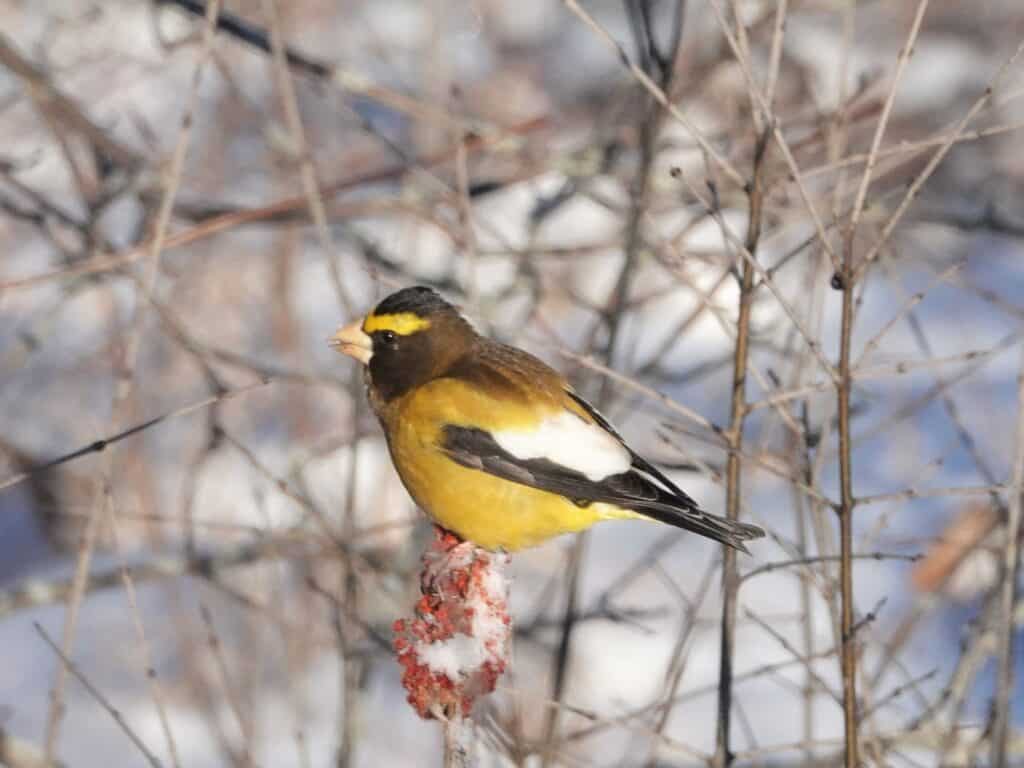
One more bird to watch for – albeit not a finch – is the bohemian waxwing. Although this year’s forecast is not promising, at least some of these gorgeous birds show up each winter. This may be partly due to the local abundance of European buckthorn, a non-native shrub that produces a large berry crop every year. They’re also attracted to European mountain-ash berries and ornamental crabapples. Some have already been seen this fall.
Looking out at my feeders right now, it’s exciting to wonder which nomads from the north might grace us with their presence in the coming months. But, no matter what the forecast might be, there’s always surprises. Who knows? Maybe even great gray owls will pay a vist!
CLIMATE CHAOS UPDATE
COP 26 update:
- Over 100 world leaders have agreed to reverse deforestation by 2030. Crucially, Brazil is among the signatories.
- More than 90 nations, representing two-thirds of the global economy – have committed to reduce methane emissions by at least 30% by 2030.
- Forty-six countries have signed an agreement to phase out existing coal-fuelled power plants and stop building new ones. However, Australia, India, the US, and China have not yet committed.
- India has announced that it intends to generate half its electricity from renewables by 2030 and achieve net zero emissions by 2070. Most observers consider this significant, given the huge challenges the country faces.
- Despite the commitments countries have made, they’re not enough to avoid disastrous levels of global heating. Temperature rise is still on course to reach 2 C by 2050 and top 2.4C by the end of the century, according to the highly respected Climate Action Tracker coalition. Remember, the goal is to limit warming to 1.5 C.
CO2 ppm: A key measure of how much climate progress the world is making is the amount of CO2 in parts per million (ppm) in the atmosphere and whether it is rising. The pre-industrial level was 280 ppm and the highest level deemed safe is 350 ppm. The graphic below shows the unsettling current readings.
TAKE ACTION: To see a list of ways YOU can take climate action, go to https://forourgrandchildren.ca/ and click on the ACTION buttons.
